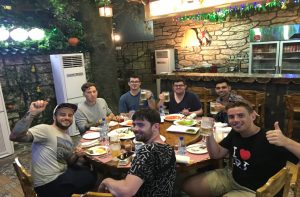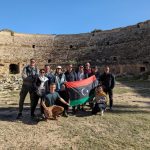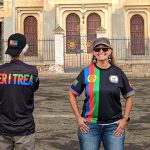In May of 2008, I took a trip to the DPRK on YPT’s first ever tour. To say that it was eye-opening experience would be an understatement; North Korea was even less open to tourism then than it is now, and it was, for all of us on that trip (including the YPT founders), a once-in-a-lifetime experience.
I was kinda slow to get on the YPT bandwagon. The YPT founders went on, of course, to turn the company into what it is today, offering not only a plethora of tours to the DPRK, but to all kinds of destinations all over the world. I, on the other hand, only officially joined the company some three months ago. One of my responsibilities upon joining the company was, happily enough, returning to North Korea as a tour guide ten years on.
I was naturally curious to see how Pyongyang had changed over the past years. The Pyongyang I recalled was a bizarrely empty city: wide roads devoid of cars, few people on the streets, and a virtual ghost town after dark.
Ten years, on, then, how had the DPRK’s capital changed?
The city is much busier
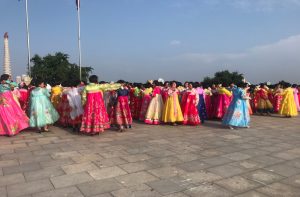
As I mentioned, Pyongyang was a little like a ghost town ten years ago. Roads built to accommodate six lanes had only a handful of cars, leaving the fabled Pyongyang traffic girls very little to do. There was also little foot traffic in the city. After dark, almost all electricity was shut off across the city, creating an almost eerie post-apocalyptic feel as you looked out across a pitch-black concrete jungle.
The Pyongyang of 2018, by contrast, could not be any different. The city is much more open in many respects; the once-empty six-lane roads are teeming with modern cars, the pavements are filled with locals going about their day, and small ice-cream stands have popped up across the city. Pyongyang seems much more like a living, breathing city.
The guides are much friendlier…
I wouldn’t characterise our guides from 2008 as ‘unfriendly’, exactly, but they were certainly somewhat detached. They were happy to answer any questions that we had, and would chat with us whenever we approached them, but it was difficult to feel that you had got to know them on any level other than the professional.
The guides on my last trip, however, were very different. They were incredibly open, would cheerfully chat about their personal lives and experiences, and had wicked senses of humour. Some of the lads on my tour were somewhat bawdy and loved a bit of banter, and the guides gave as good as they got.
Who’s to say what caused the change? It’s important to remember that ten years ago, there was nowhere near the volume of tourism to the DPRK that there is today, which has resulted in a commensurate rise in foreign-Korean contact. The guides of today no longer learn about foreign languages and culture exclusively from text books; they are in constant contact with actual foreigners. This kind of intercultural exchange can only be a good thing.
…and they’re much more relaxed
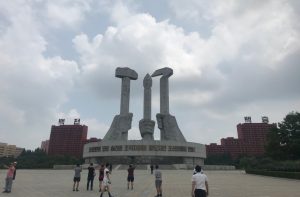
Ten years ago, you were on a tight leash. You were accompanied at all times by your two guides, and there was absolutely no wandering off on your own.
This is still true, to an extent (don’t expect to be meandering through the streets on a one-man stroll), but where the guides watched you like a hawk on my 2008 trip, this time around they didn’t feel the need to hold your hand at all points. If you needed the toilet, for example, you didn’t need to be trailed by your very own minder.
This, coupled with the generally busier and more open atmosphere of the city, made for a much more authentic experience.
That said…
It’s still necessary to be respectful
Pyongyang may be a much more open place than it once was, but it’s still not a Club Med holiday. Be mindful of the sensibilities of both your guides and other Koreans that you may meet, and always follow the rules set down for you by both your YPT reps and Korean guides!
